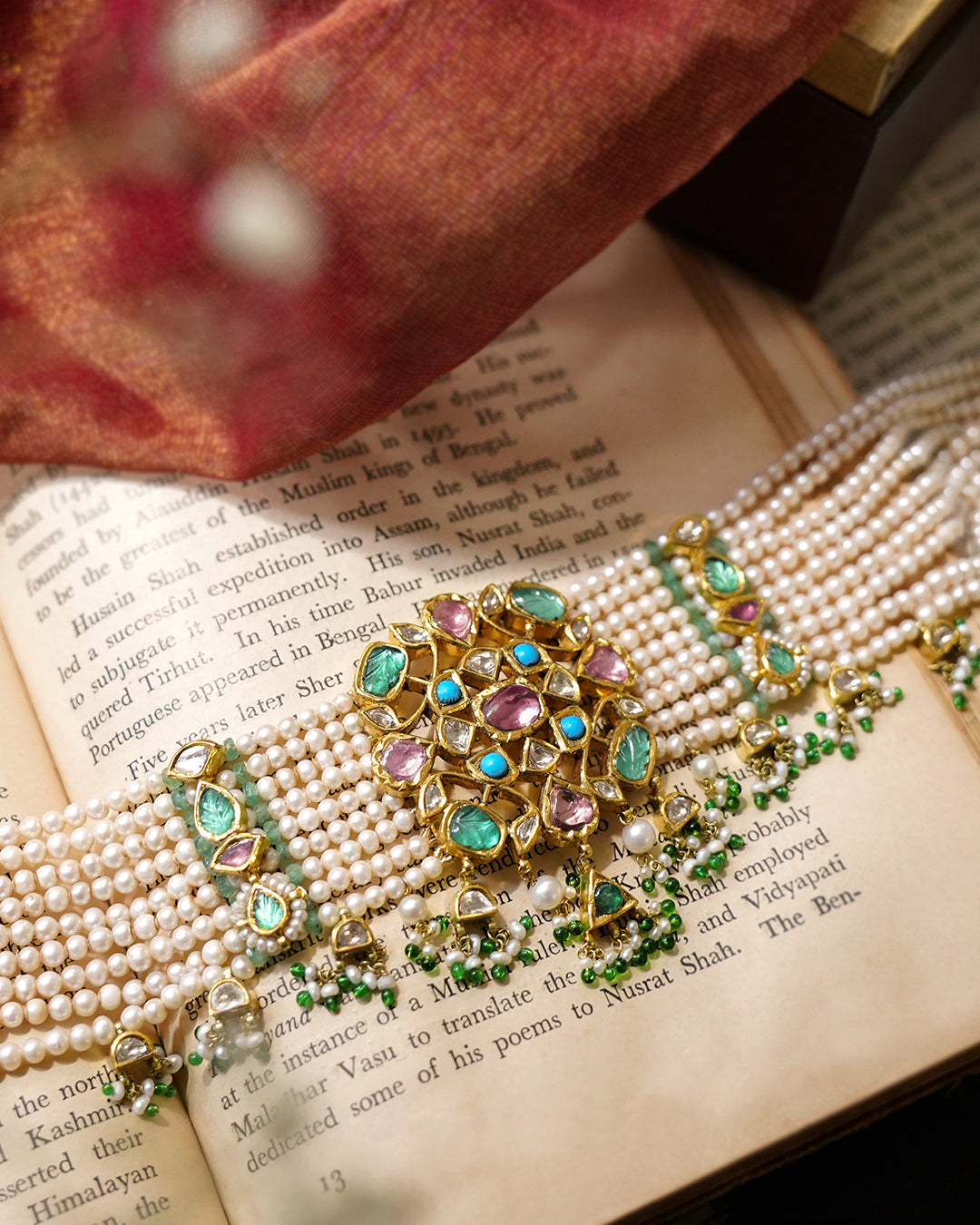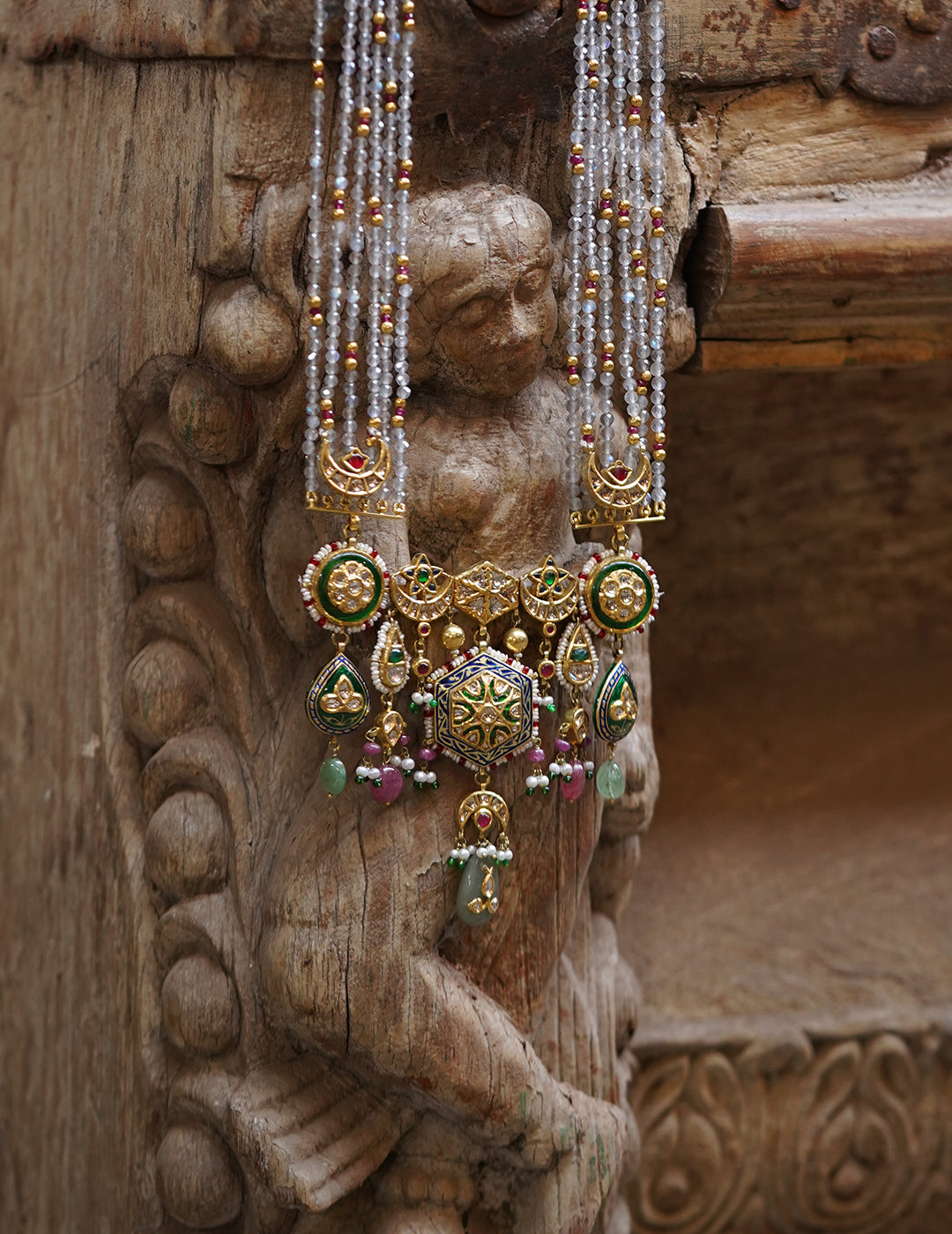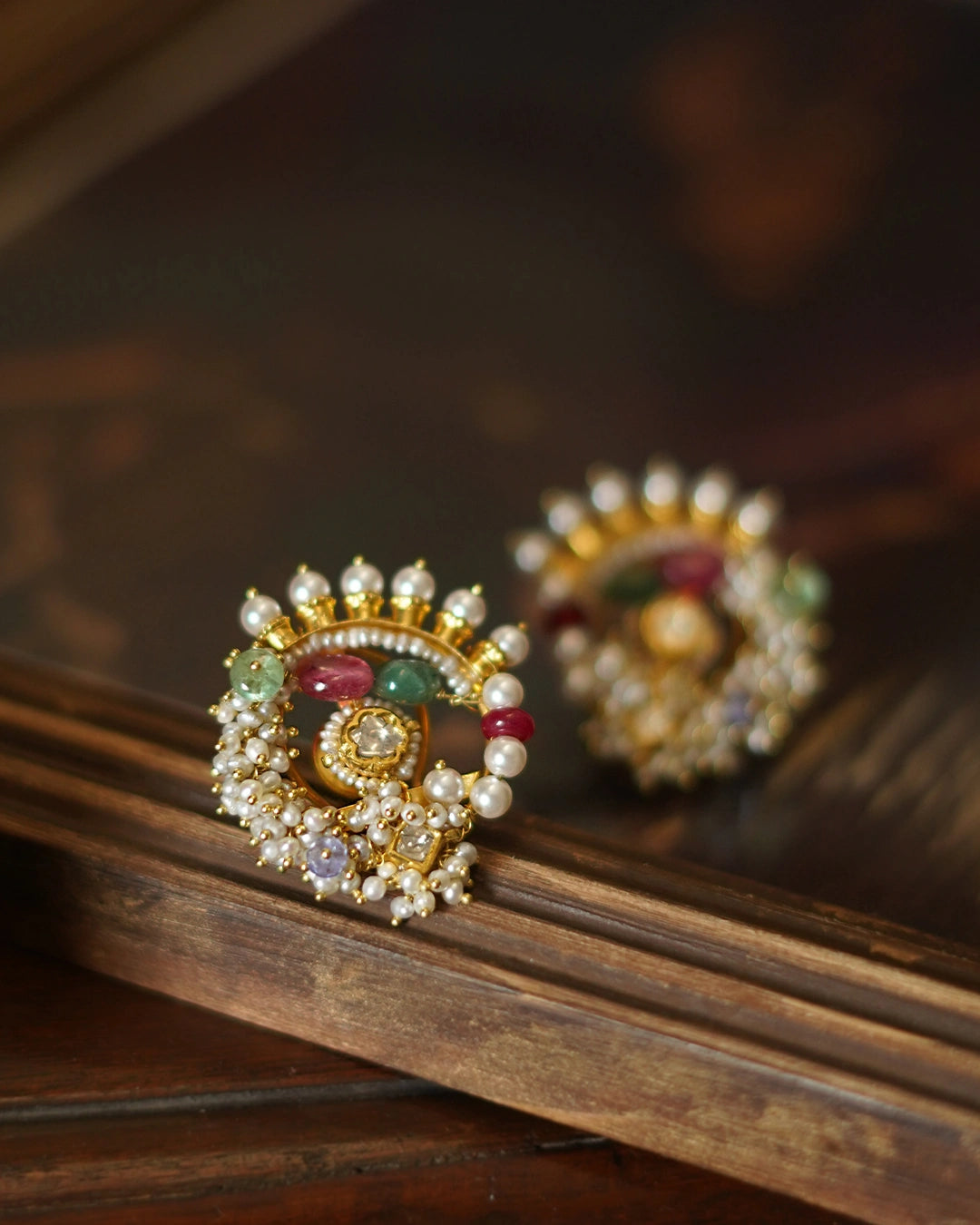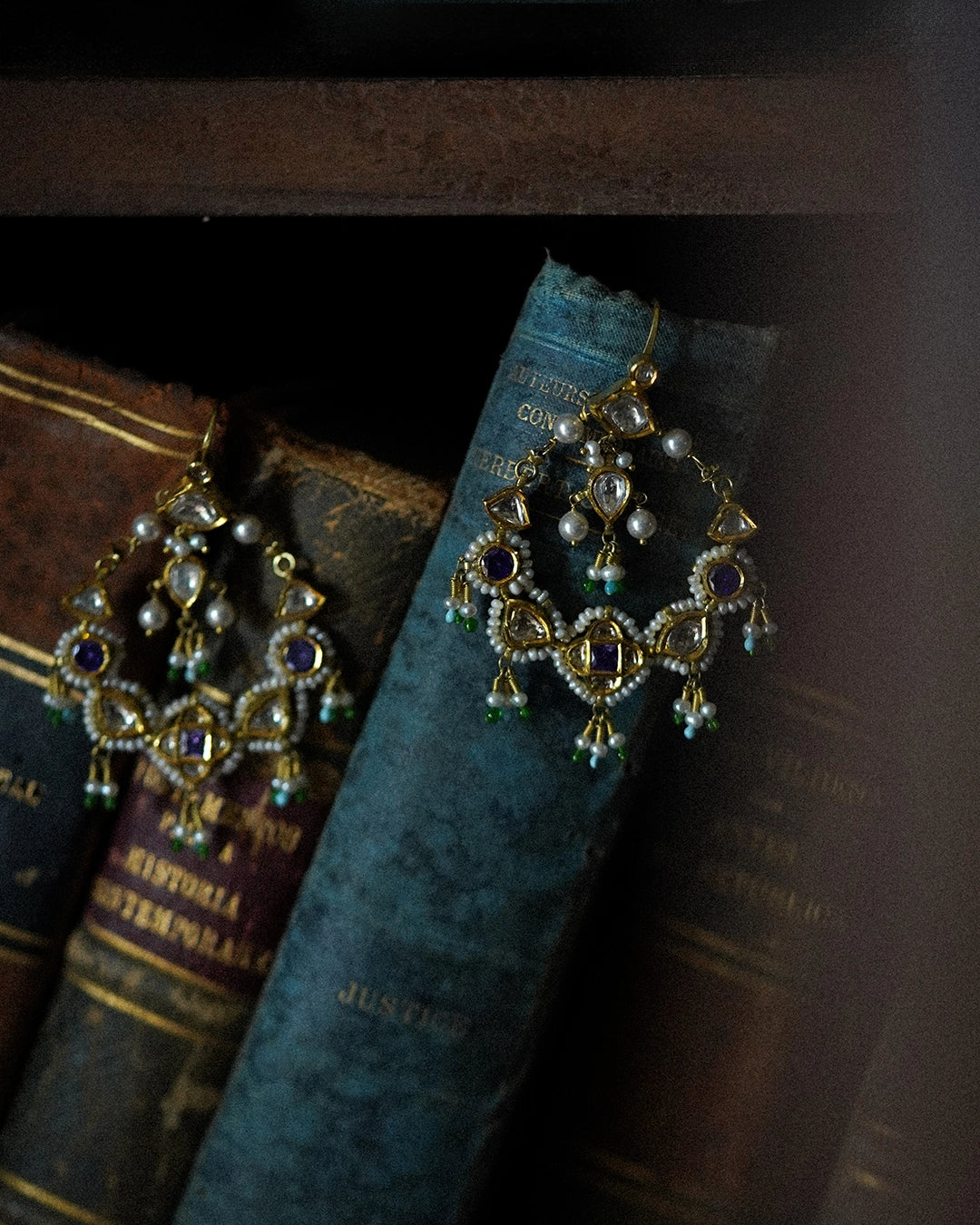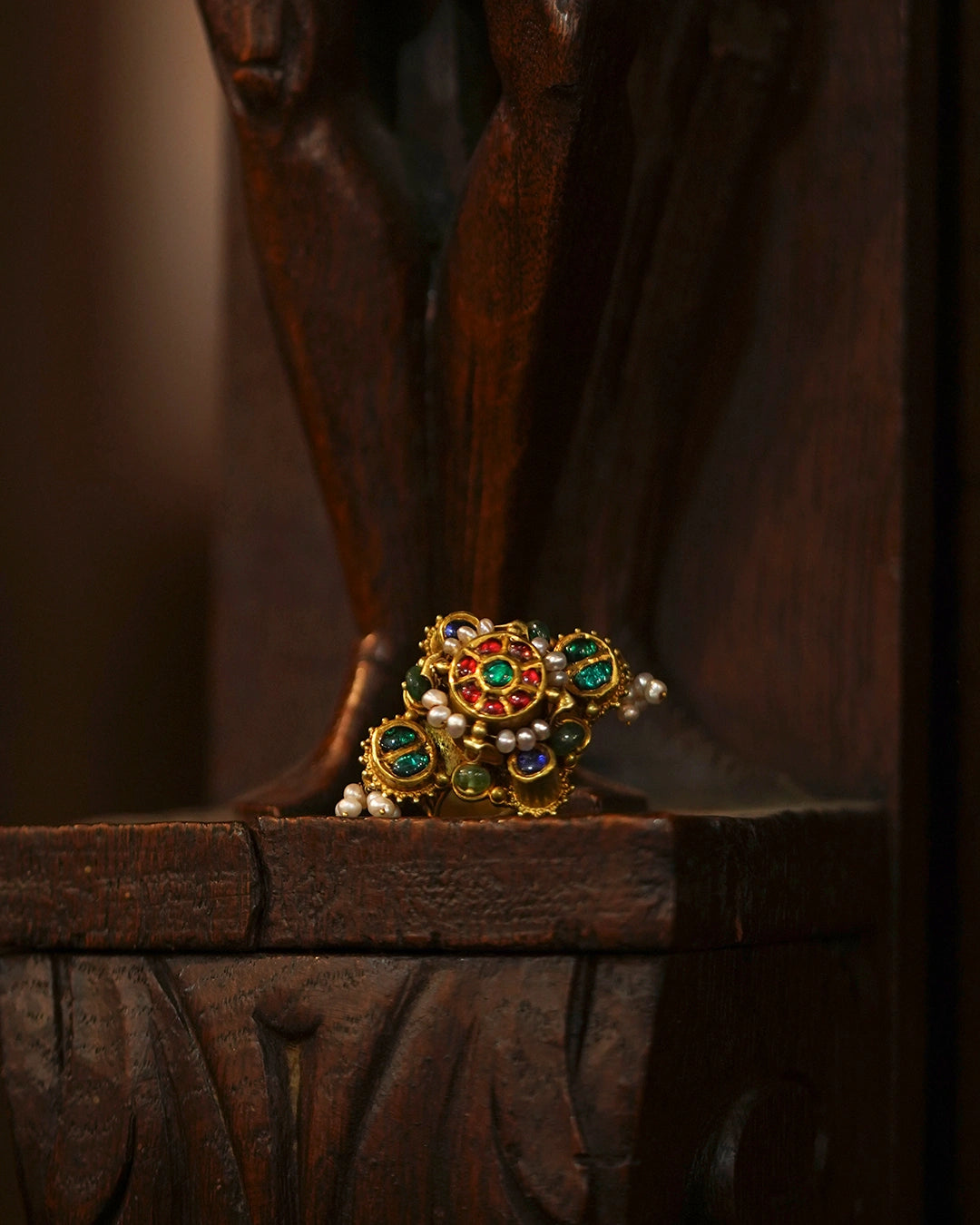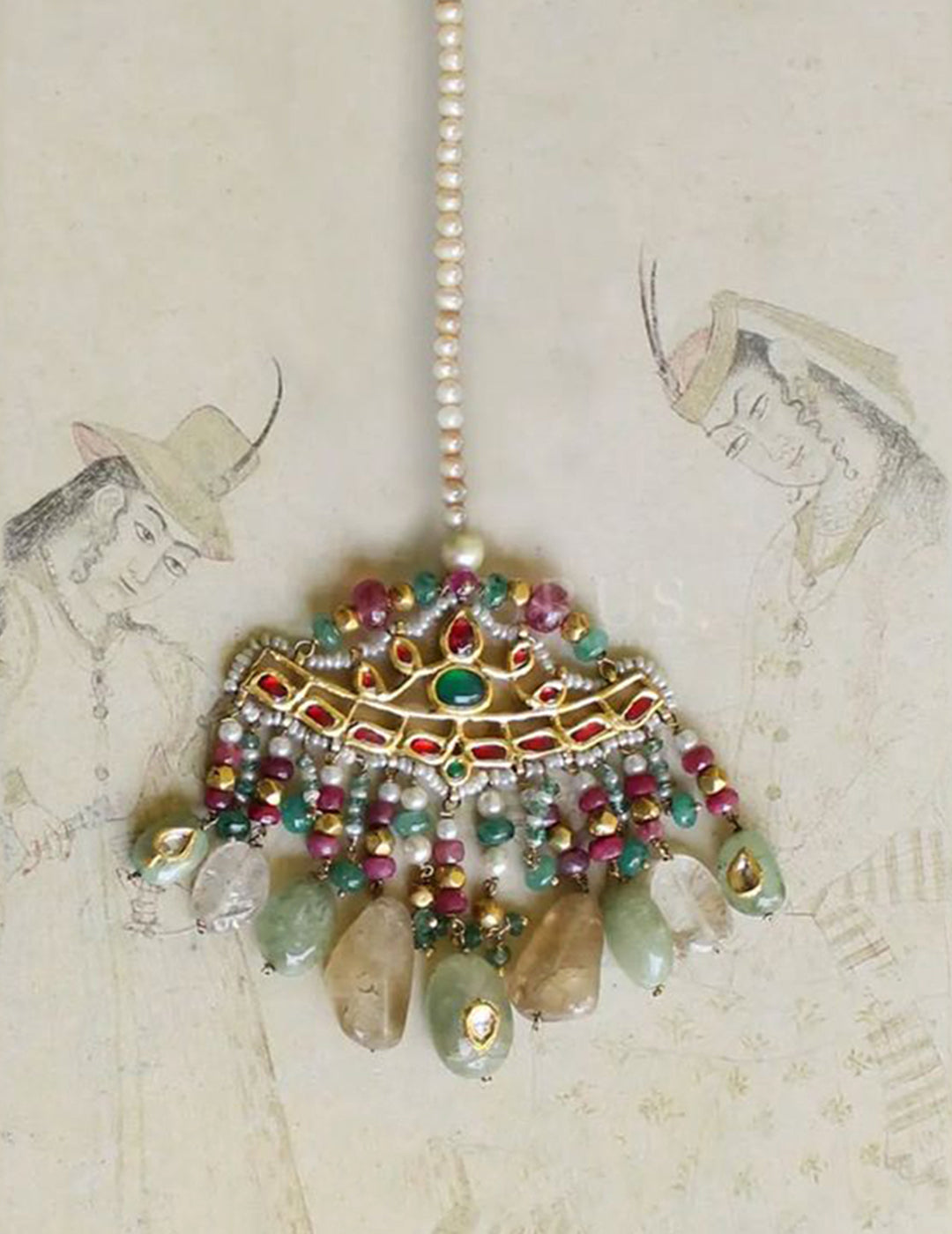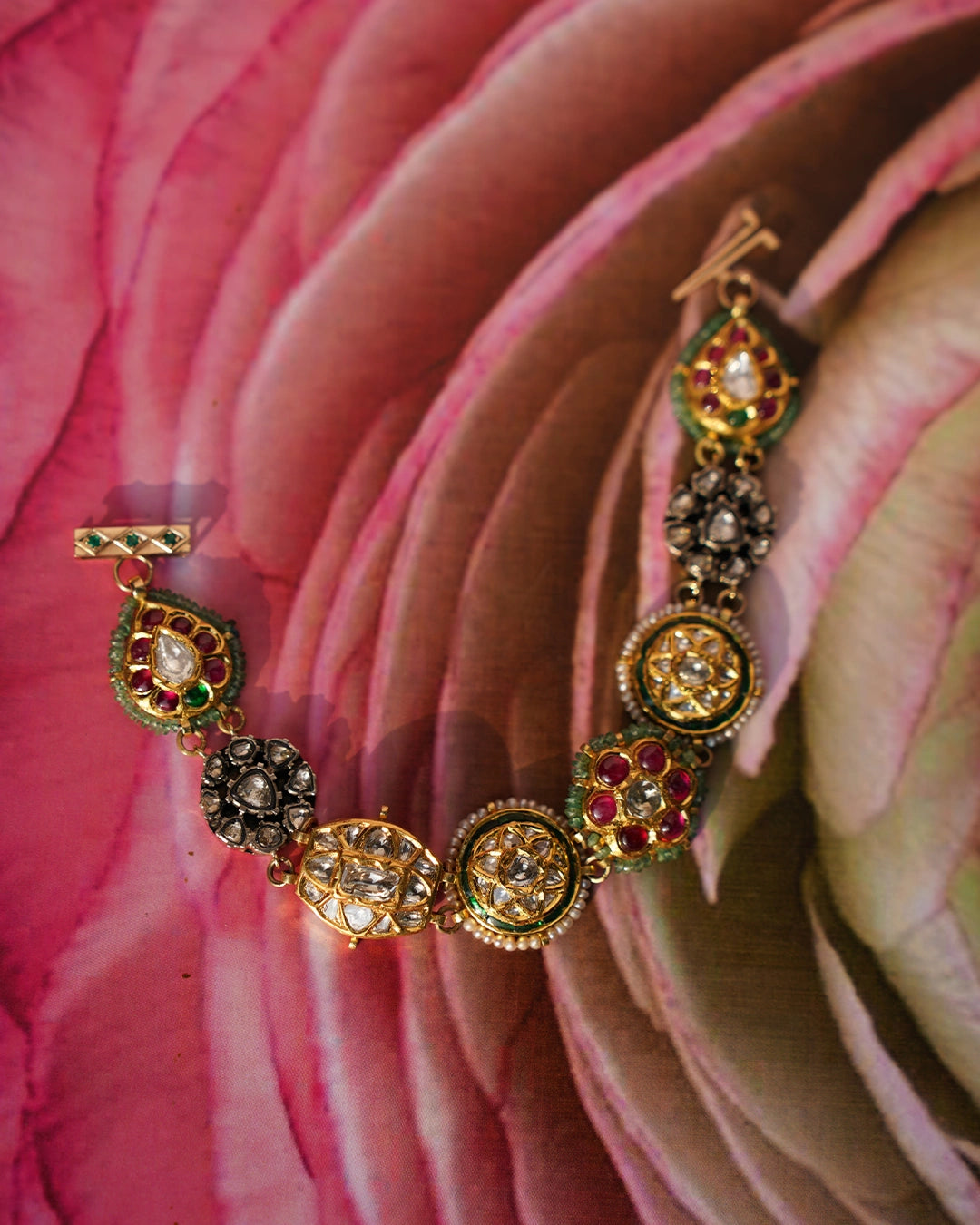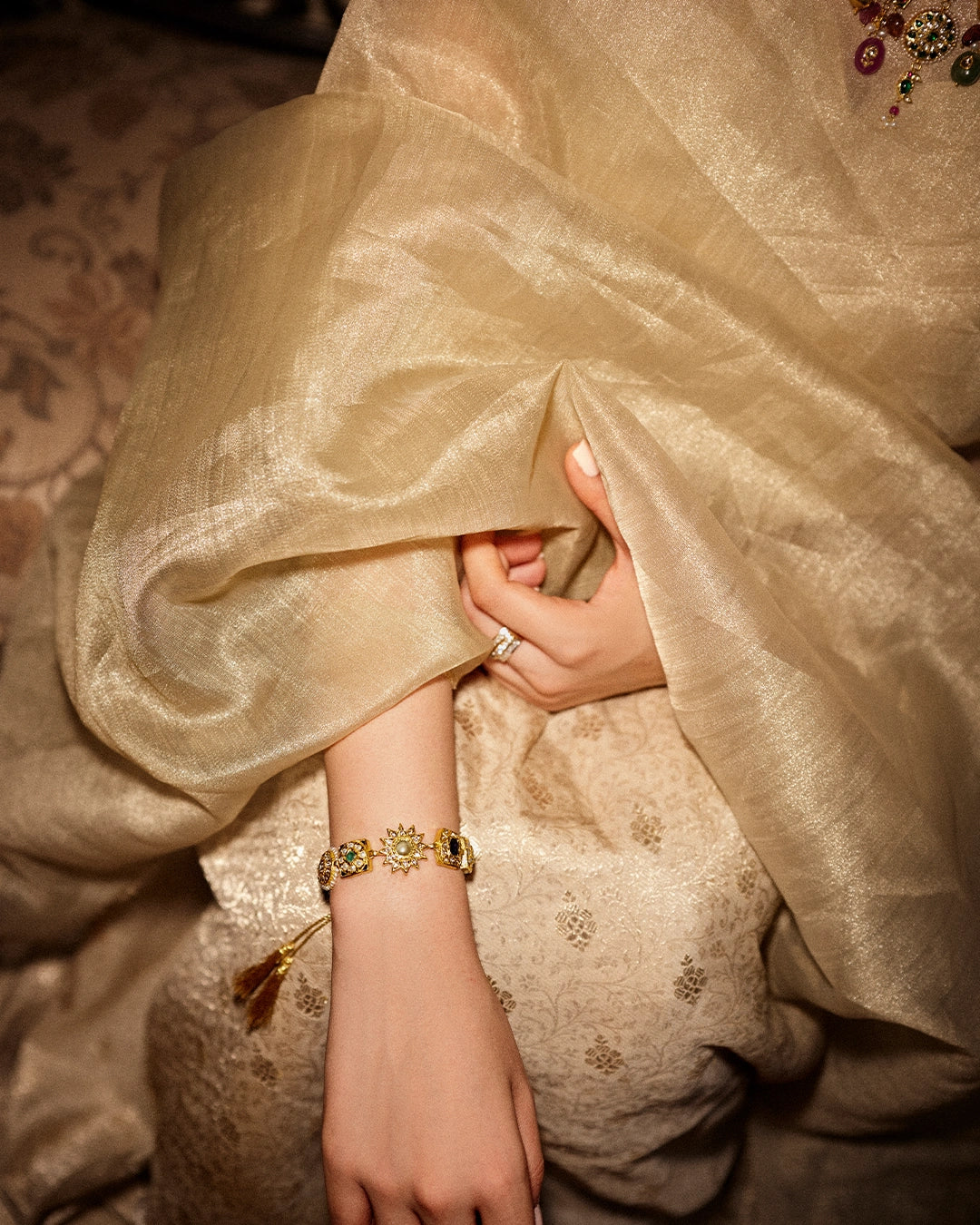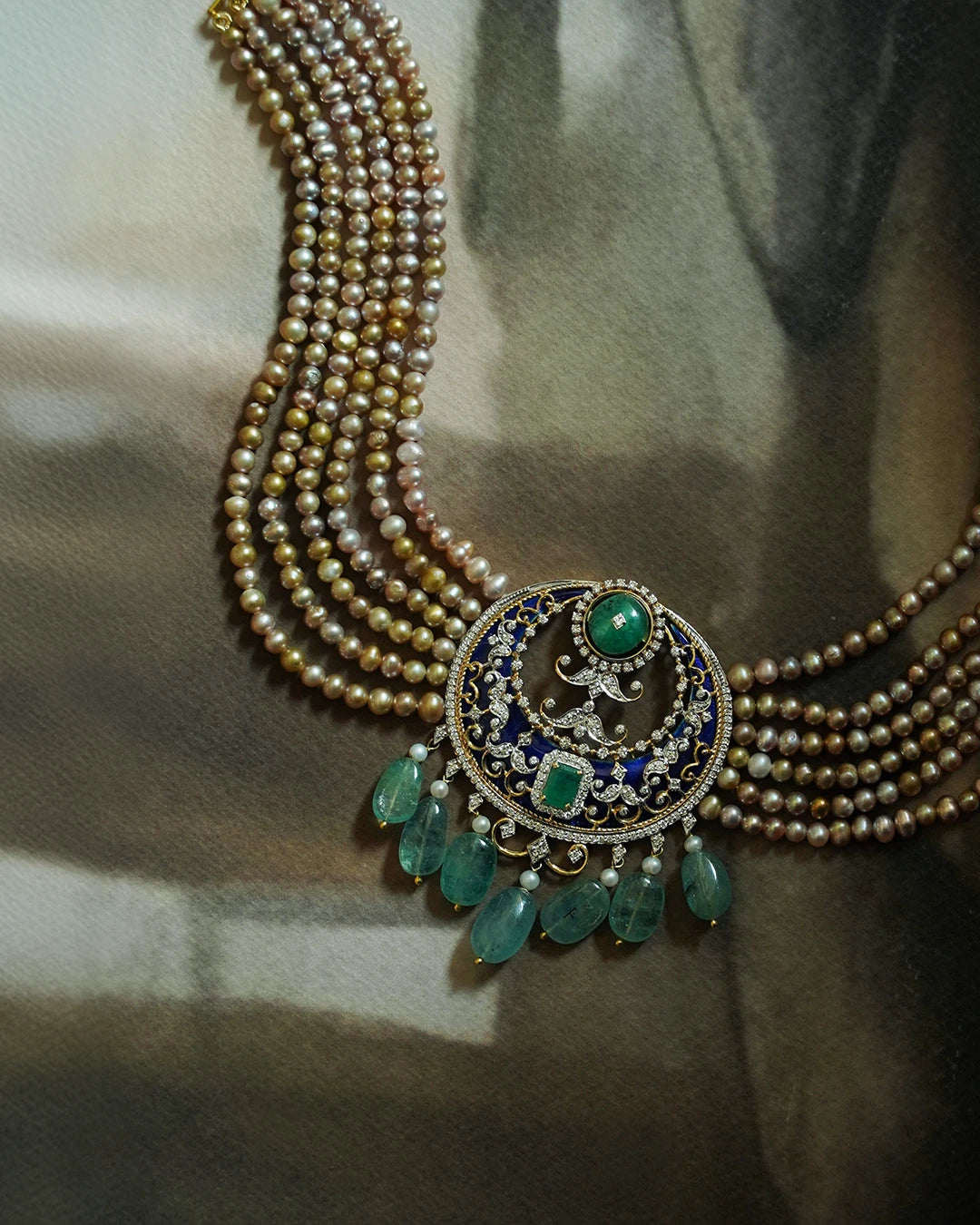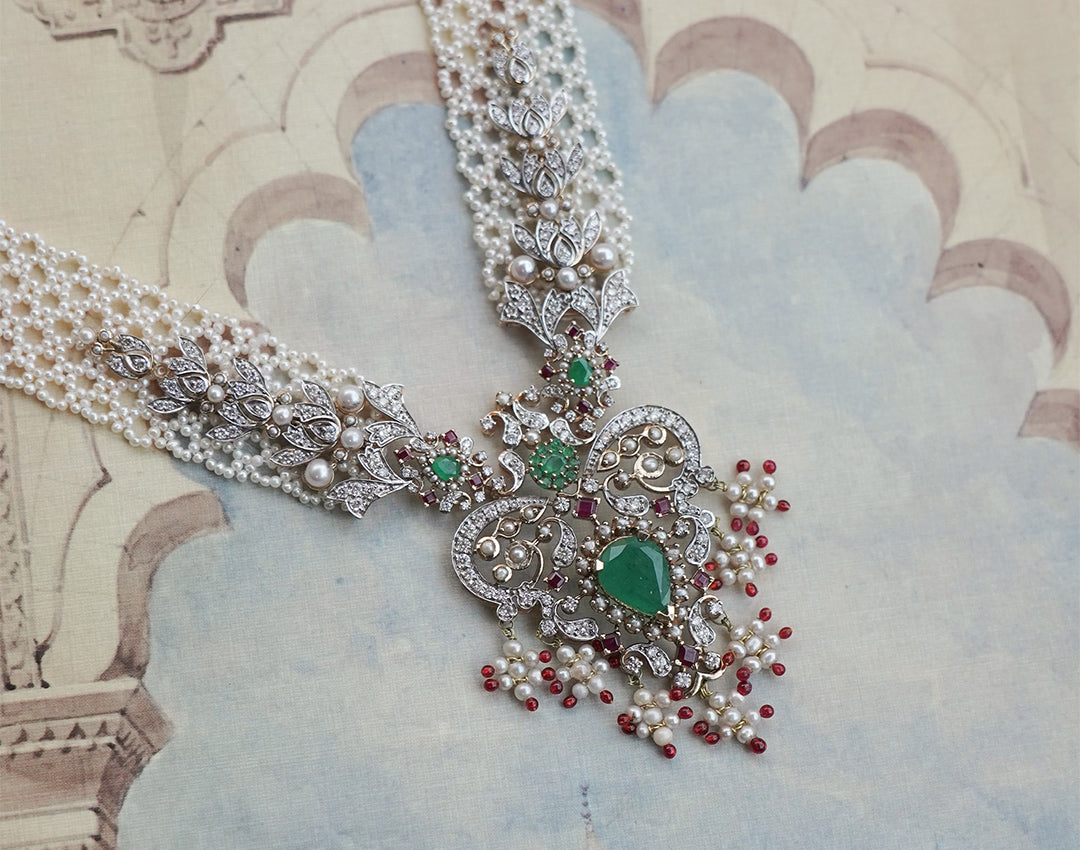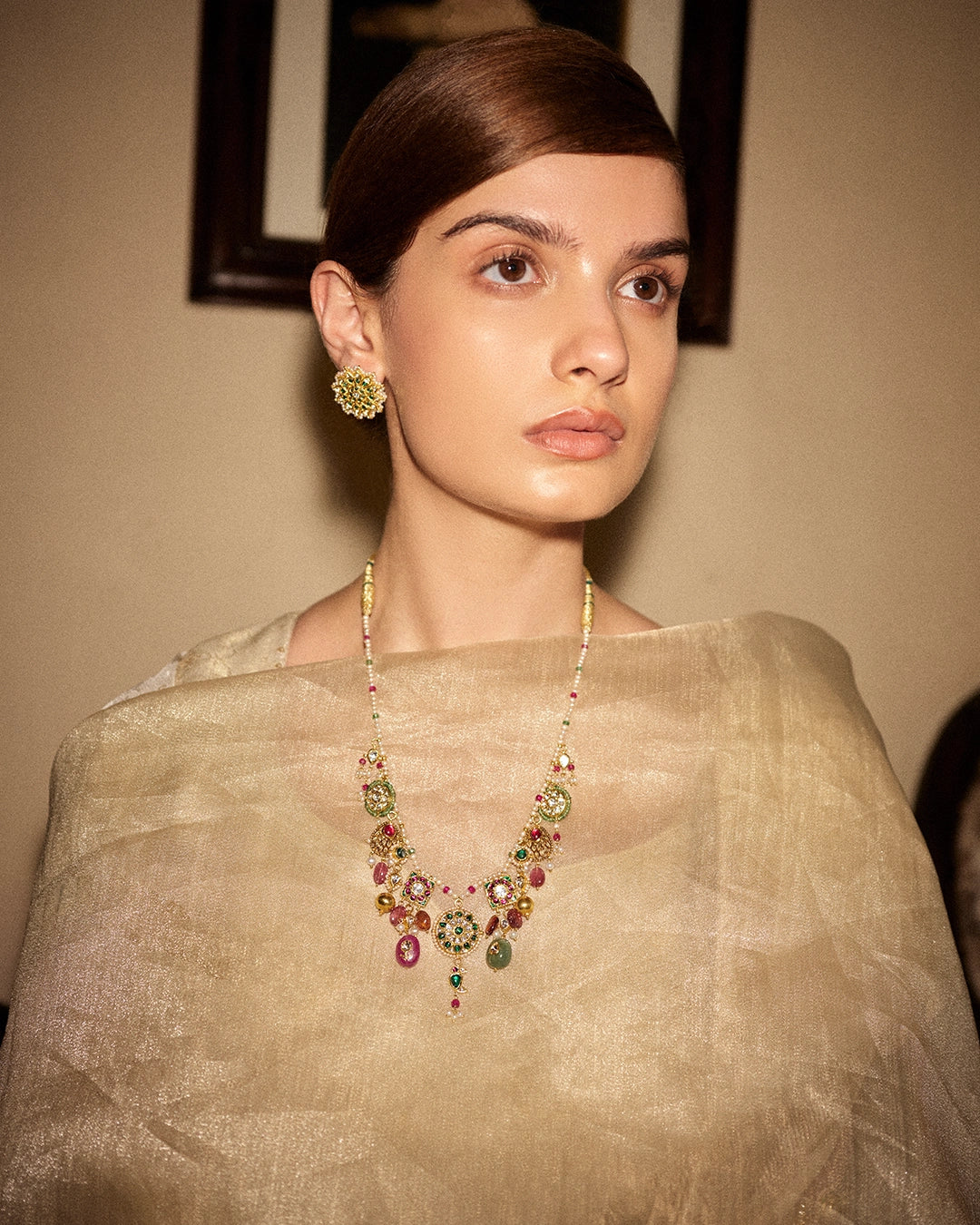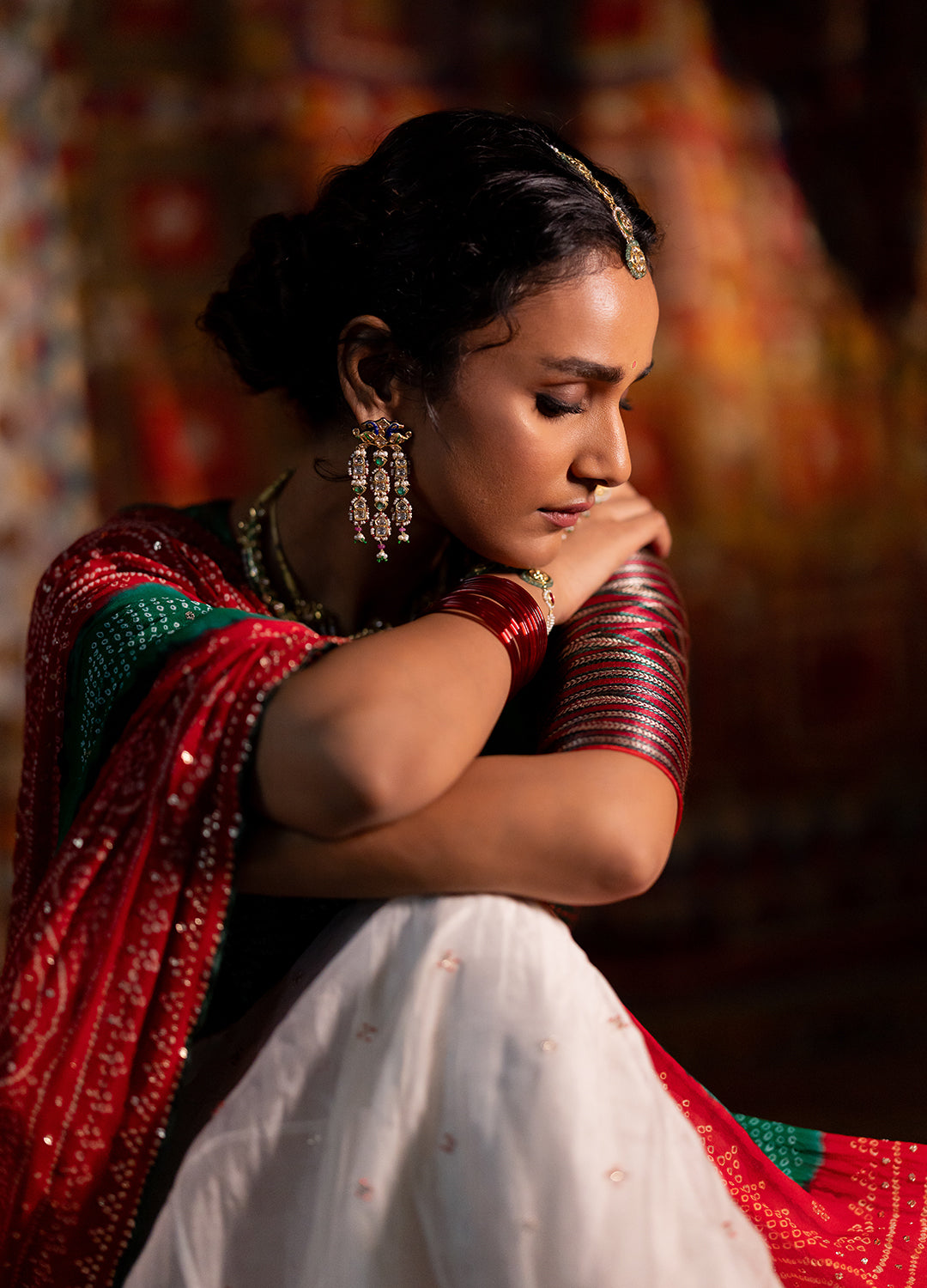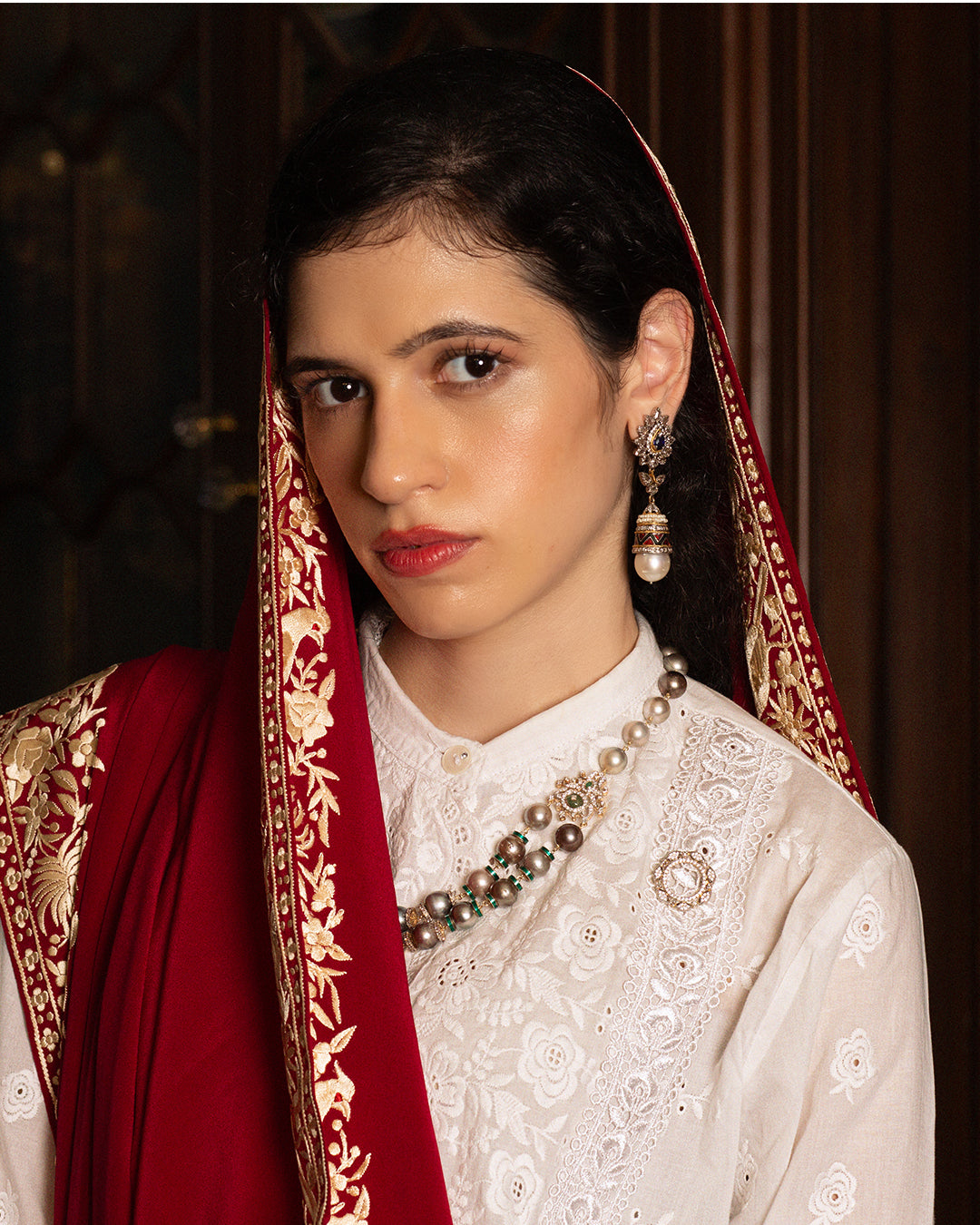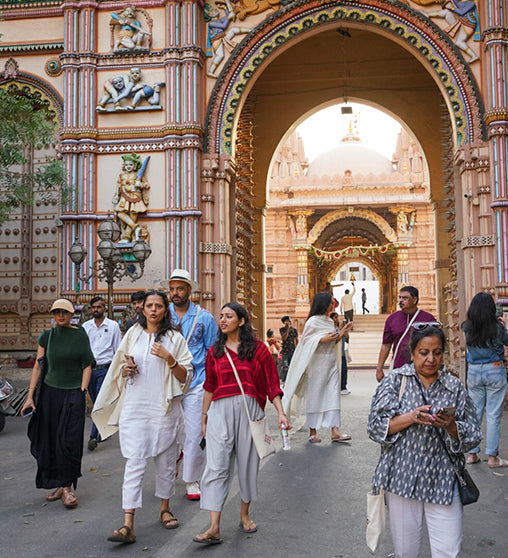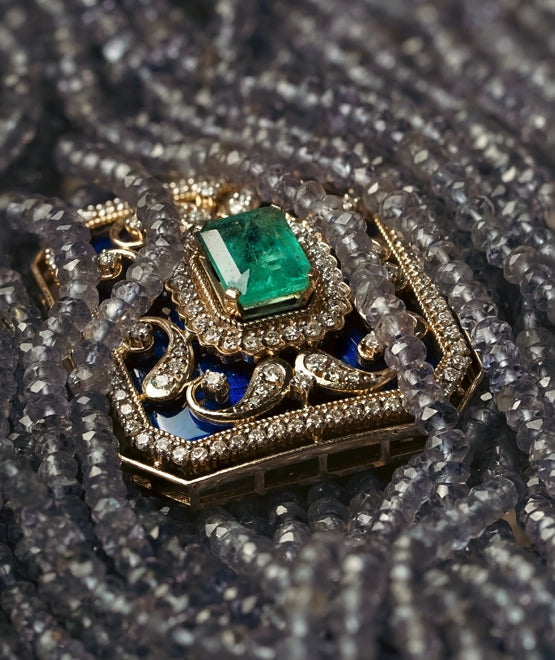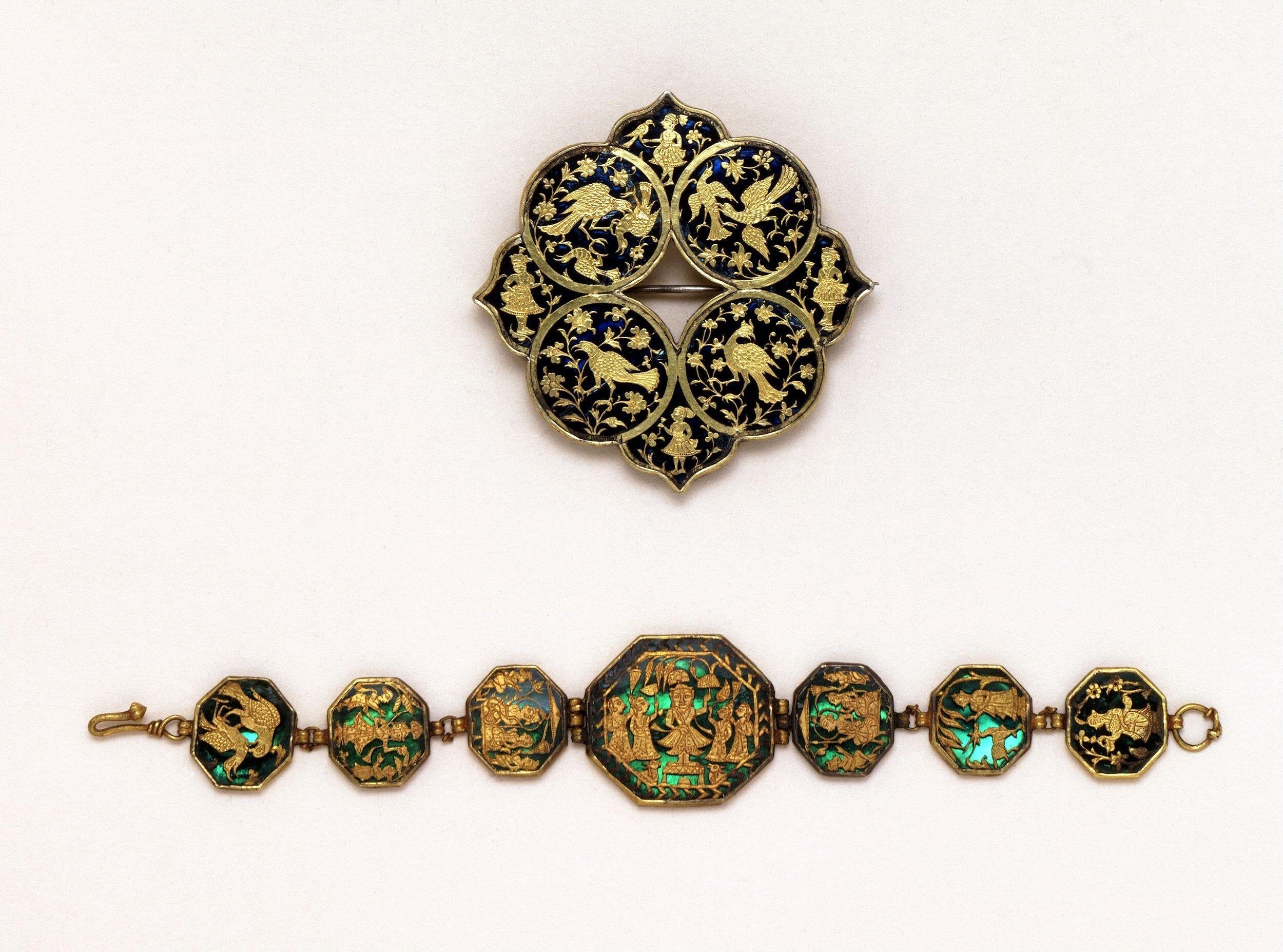Elaborate designs painstakingly handcrafted out of thin sheets of gold fused on molten glass—these breathtakingly beautiful pieces of art arise from a gold jewelry-making technique known as Thewa. Having its roots in the land of the kings, i.e. Rajasthan, Thewa is practiced only by the men of the family related to Nathuni Sonewalla, the goldsmith who is credited with creating this unique gold jewelry-making technique.
The Origins of Thewa Gold Jewelry
It was in 1767 when Nathuni Sonewella, a goldsmith employed by Maharawat Samant Singh of Partabgarh (also known as Pertabgarh and Pratapgarh), created the gold jewelry-making technique known as Thewa. In vernacular language, the word Thewa means “setting”, probably implying setting the sheet of gold with intricate designs on multicolored glass. Interestingly enough, no known source of inspiration exists, since this gold jewelry-making technique resembles no other process practiced anywhere in India.

Oval silver gilt pendant with inset green glass overlaid with a gold tracery of birds and flowers in thew[a]-work; beaded border and two suspension rings. The back is slightly convex.
Source and image courtesy: Victoria and Albert Museum
The technology of Thewa gold jewelry-making technique was passed down from fathers who practiced it to their sons, who normally began learning it by the age of five, just like all other well-established traditional crafts. The craft grew as a result of the growth of a significant Western market, notably during the Victorian era. Thewa-made items and gold jewelry were sold to British women who resided in or traveled to the nation and were taken to Europe as gifts. European jewelry historians now recognize the distinctiveness of the craft of producing gold jewelry.

This necklace employs a distinctive technique called Thewa. The ornaments were made of plaques of red, green, or blue glass. Patterns in a delicate gold tracery—here showing incarnations of the Hindu god Vishnu—were fused onto the surface of the glass. The glass was held in gold and silver frames. The technique is still practiced in Pratapgarh today. Ornaments using this technique were popular locally and also exported to Europe.
Source and image courtesy: Victoria and Albert Museum
A Well-Kept Secret for Centuries
Peculiarly, the Thewa gold jewelry-making technique was only practiced in this region of India and didn't establish itself anywhere else. Although records indicate it was practiced in Ratlam and Indore, cities located just across the present-day state border from Partabgarh in Madhya Pradesh, it is no longer common there. Members of Partabgarh who had migrated there are likely to have taken it with them. The fact that the artisans managed to keep their skill a secret and persisted in this location accounts for the technique's limitations inside the boundaries of Partabgarh. Daughters and sons-in-law are not permitted to visit the workplaces in order to protect this secret.

An octagonal brooch made of thewa-work. The foil-backed green glass octagonal plaque has applied gold tracery decoration of a hunting scene. Under a curving tree a hunter with an attendant behind on an elephant are shooting a tiger above a scene of a deer being attacked by another tiger. The scene is enclosed within a border of flowers and heart-shaped leaves. The plaque is set within a border of gold granulated roundels and a plain back. There is a pin to allow it to be worn as a brooch and a suspension ring to allow it to be worn as a pendant.
Source and image courtesy: Victoria and Albert Museum
Because of this secrecy, inaccuracies creep into their descriptions, which have unfortunately been repeated in several accounts, giving rise to the incorrect labeling of this gold jewelry-making art form as “quasi-enamel,” “imitation enamel,” and even “quasi-gold enamel.” On the contrary, Thewa has no relation with enameling whatsoever.
While the craftsmen are willing to participate in interviews and provide answers, they do so only up to a point. After that, they respectfully decline to share the trade secrets that they have successfully kept hidden for more than two hundred years and counting.



